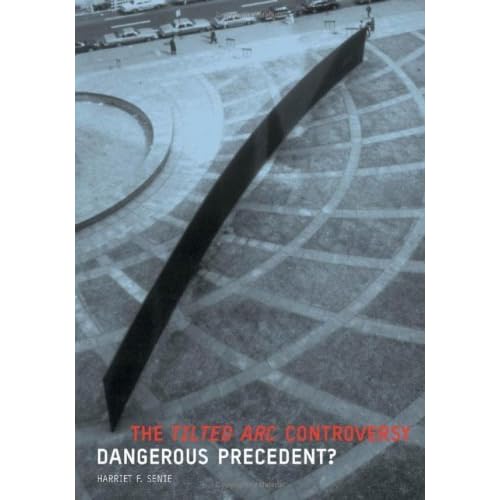The Tilted ARC Controversy: Dangerous Precedent?
Category: Kindle Store,Kindle eBooks,Arts & Photography
The Tilted ARC Controversy: Dangerous Precedent? Details
Since its installation at and subsequent removal from New York City's Federal Plaza, noted sculptor Richard Serra's Tilted Arc has been a touchstone for debates over the role of public art. Installed in 1981, the 10-foot-high, 120-foot-long curved wall of Cor-Ten self-rusting steel instantly became a magnet for criticism. Art critics in the New York Times and the Village Voice labeled it the city's worst public sculpture, and many denounced it as an example of the elitism associated with art and as an obstacle to the use and enjoyment of the plaza. Harriet F. Senie explores the history of Tilted Arc, including its 1979 commission and the heated public hearings that eventually led to its removal in 1989 (it was dismantled and is currently stored in a government warehouse in Maryland). Analyzing the archive of popular opinion, Senie shows how the sculpture was caught in an avalanche of shifting local and national discussions about public funding for the arts. She examines the tactics of those opposed to the sculpture and the media's superficial and sensational coverage of the controversy, reframing the dialogue in terms of public art, public space, and public policy instead of the question of whether the removal of Tilted Arc was poetic justice or a dangerous precedent. Senie provides an enlightening history and analysis of a controversy that will continue to inform our discussions about public art for years to come.Harriet F. Senie is director of museum studies and professor of art history at the City University of New York's City College and professor of art history at CUNY's Graduate Center.

Reviews
Tilted Arc by Richard Serra, one of the largest public sculptures commissioned for a Federal building, was removed from its New York site in 1989, only eight years after it was installed, as a result of the most famous conflict between artist and public opinion. The book describes in detail the fate of a difficult work by this great (if macho) living sculptor, analyzing the multiple issues and problems that surround the public art process. Harriet Senie is one of the very rare modern art historians who have concentrated on public art, and the one who knows most about its history and politics. Unencumbered by the complexities of present critical theory, she writes in the simple language of the journalist (not inappropriate for the subject and its audience), trying to be fair to all points of view.The Preface of the book outlines its entire content, while the four chapters (1. Commission, Installation, Removal; 2. Public Opinion; 3. Reframing the Controversy; and 4. After Tilted Arc) are neatly divided into many subsections with titles easy to follow. A Conclusion summarizes the subject and the complex questions it raises. In-between, Senie manages to discuss quite a bit of Serra's art before and after Tilted Arc, and to quote his uncompromising and always illuminating opinions... The fifty-five b&w reproductions, while of rather grim grayness, illustrate adequately the artist's related works and comparable public plazas with sculptures by other artists.Aside from bringing together a great deal of material about this particular public art debate, Senie's book is also an invaluable source of information on public art policies in this country and on the history of federally-sponsored public art of the last quarter of the 20th century (the NEA and GSA programs). While perhaps a little repetitive, it is a goldmine of information and a must for artists, historians and policy makers interested in public sculpture.


